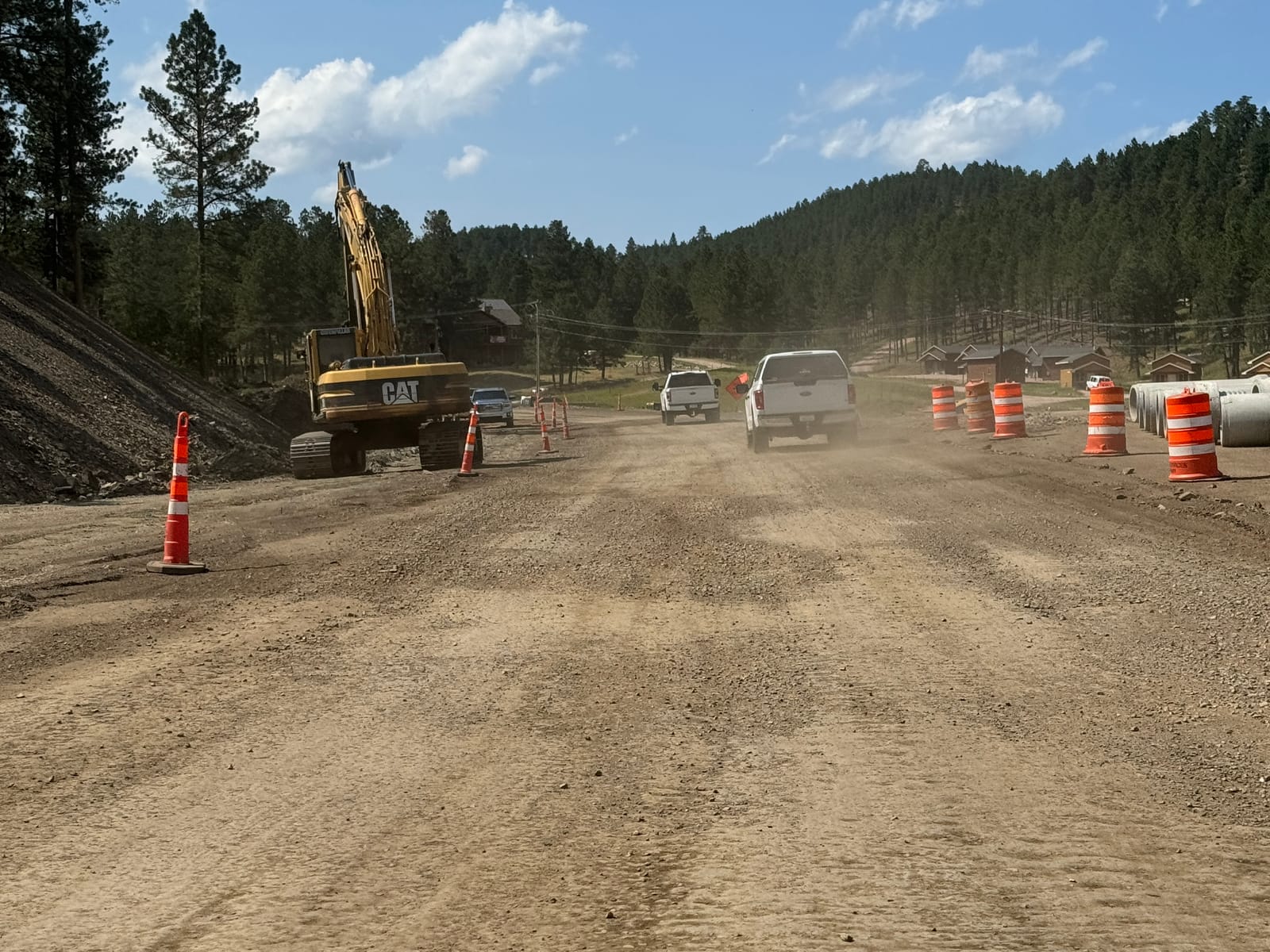SILVER CITY, S.D. – On a recent drive through this super scenic area of the Black Hills, Ron Waterland saw with his own eyes the potential risks bikers will encounter when riding on gravel sections of U.S. 385 during the upcoming 2024 Sturgis Motorcycle Rally.
Waterland has a cabin near Silver City, in the heart of the ongoing U.S. 385 construction project, and said the gravel will make the tight, winding two-lane highway even less safe than usual during the Aug. 2-11 event.
On July 14, Waterland drove from his home in Sturgis to his cabin and a light rain broke out. While on U.S. 385, he saw two motorcyclists who had wiped out on a section of gravel road that will be in place before, during and after the rally.
The two riders stood by angry, though unhurt, as their large touring bikes packed with gear lay on their sides. “They were really disgruntled,” Waterland said.
Waterland is an experienced biker and former Sturgis City Council member who led the annual Mayor’s Ride along U.S. 385 during numerous past rallies. He is one of many rally veterans who are concerned that parts of U.S. 385 – the only major north-south highway through the central Black Hills – will consist of sections of gravel during the event that could draw a half-million bikers to Sturgis and its environs.
“Boy, it’s a mess, and it’s not a good place to ride a motorcycle through right now,” Waterland told News Watch. “It (the gravel) presents stability issues for people traveling through that area, and they’re going to take more of a risk than usual.”
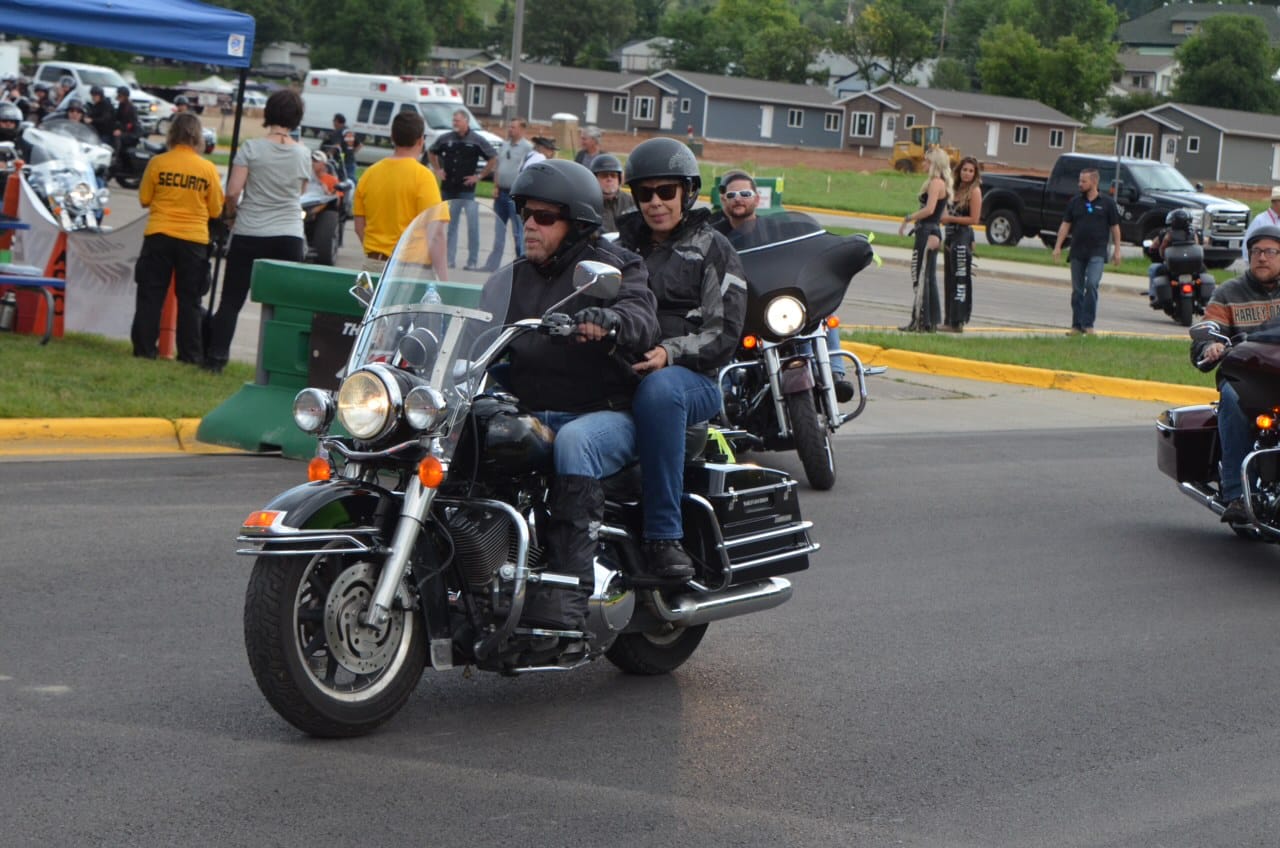
Widening the road, smoothing out curves on Highway 385
The South Dakota Department of Transportation has embarked on a $72 million project to rebuild 15 miles of U.S. 385, which is a popular and scenic drive, but one that also has a rate of crashes and fatalities that is double the state average.
The highway is the main link between popular destinations of Sturgis, Lead and Deadwood on the north, and Hill City, Custer and Mount Rushmore National Memorial on the south.
The two-lane highway winds around the scenic lakes of Pactola and Sheridan and along giant rock outcroppings and dramatic ridge lines. It often carries a mix of passenger cars, commercial vehicles, motorcyclists and tourist RVs and campers. And it helps fuel a regional tourism industry that brought $2 billion in revenue to South Dakota in 2021.

In the five-year period from 2018-2022 along the route, 187 crashes were reported, with four fatalities and 57 injuries. A third of those wrecks and most of the deaths occurred when motorists left the roadway, which in spots has almost no shoulder space while closely abutting rock walls or rimming atop significant dropoffs.
During the three-year project, DOT will widen road shoulders, smooth out sharp curves and add turn lanes to make the road safer for travel.
The DOT’s goal is to cut the crash rate on the segment of highway by 50%, largely by eliminating tight curves, expanding sight lines for motorists or expanding shoulders from 2 to 8 feet, which has a proven success rate in reducing runoff wrecks.
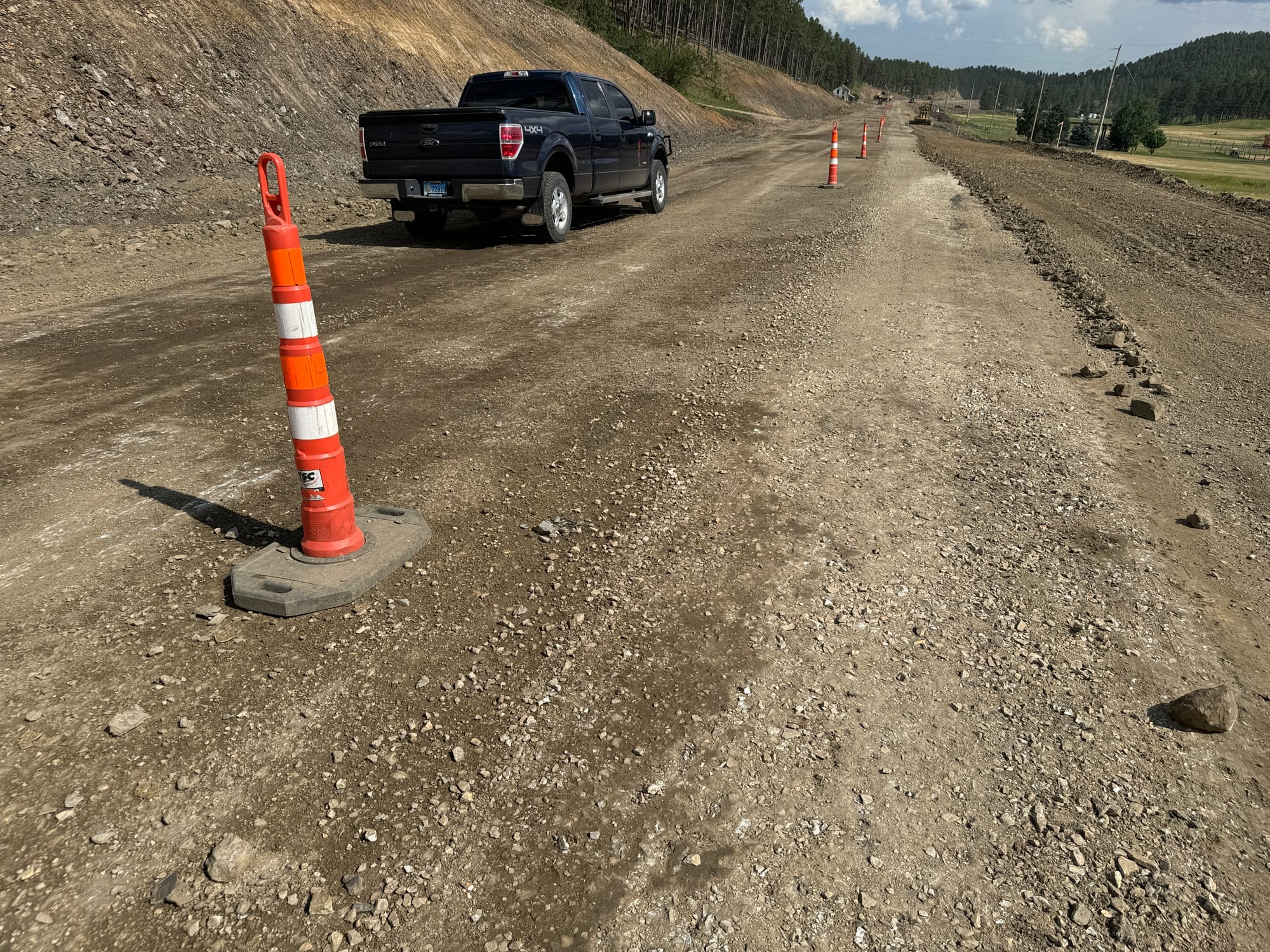
South Dakota DOT says surfaces will be safe
The DOT issued a news release on July 12 indicating that U.S. 385 will be open to traffic in both directions during the remainder of 2024, including the Sturgis rally period. Construction work on the project will be paused from July 31 to August 12 to accommodate the event.
However, the DOT project website also said the speed limit will be reduced and the road will consist of sections of a “loose gravel surface” until late 2025, and that lane restrictions will cause delays of about 15 minutes in the area from Pactola Dam roughly to Silver City Road.
Two DOT engineers – Todd Seaman in Rapid City and Bruce Schroeder in Custer – said in an email to News Watch that they believe the gravel sections of U.S. 385 will be safe for rally bikers if they follow traffic laws, travel the posted speed limit and ride within the range of their experience level.
The engineers said the highway will have a "blotter surface" in place from state Highway 44 south to Pactola, which they said closely resembles asphalt. A roughly 2-mile stretch of U.S. 385 north of Highway 44 will be a gravel surface treated with magnesium chloride, which helps tamp down dust and can firm up the road surface, they said.
During the rally, U.S. 385 will also have a short, twisting section of gravel surface just south of the Pennington/Lawrence county line where a culvert is being built.
The engineers noted that U.S. 16 west of Custer had a gravel surface during the Sturgis rally a few years ago and did not create any safety issues. They urged people with questions about the U.S. 385 construction project to visit the state project website or sign up for text message updates by texting "us385" to 605-566-4041.
City of Sturgis re-routes Mayor's Ride for rally
The highway construction and the gravel surfaces prompted the city of Sturgis to re-route its annual Mayor's Ride, which typically takes a large group of bikers from the rally headquarters south on U.S. 385 to Mount Rushmore National Memorial and then to Custer State Park for lunch.
"Bikers hate gravel," said Sturgis city spokeswoman Deb Holland. "That's one of their biggest fears, that they’re going to lose it because the gravel is not sturdy enough."
Holland said the 2024 Mayor's Ride will go instead to the Devil's Tower National Monument in Wyoming and finish with lunch at a restaurant in Belle Fourche, South Dakota.
"We've been talking for a year about how we had to adjust," Holland said. "The city recognized it early and wanted to plan something that wouldn't take us right into the belly of the beast."
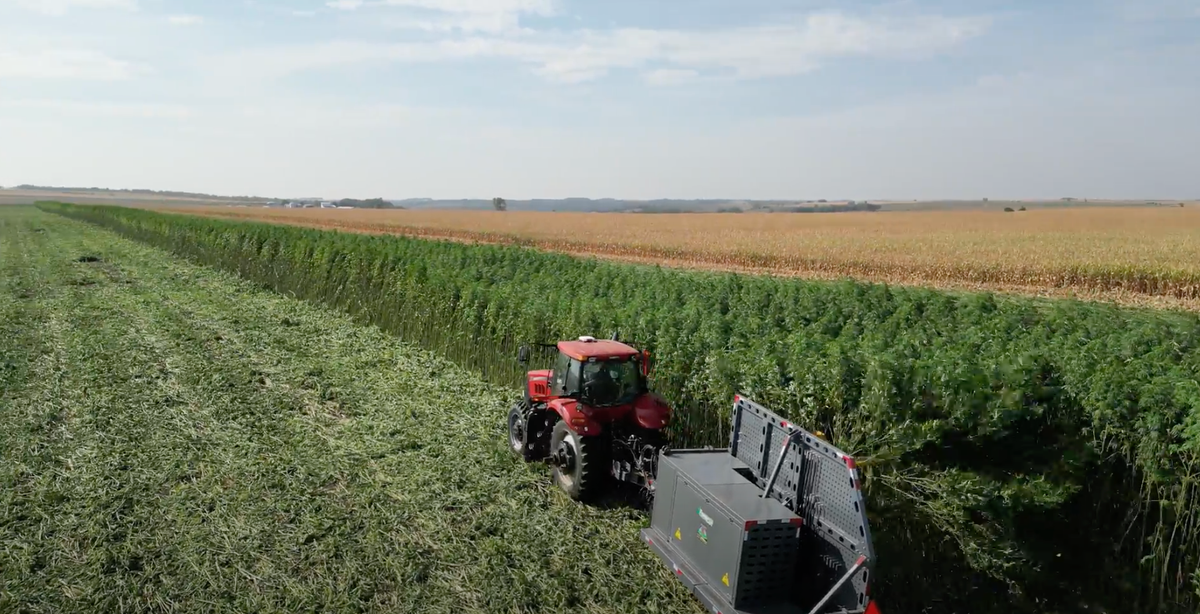
Holland said the city estimates attendance will be fairly low for the 84th annual event this year, about 450,000 to 500,000. Prior reporting by News Watch showed that attendance in 2023 was about 458,000, a decline of more than 8% from 2022, and that rally organizers are working to find ways to maintain or increase attendance.
Holland said the inaugural flat track cycle races planned for a route through downtown Sturgis on Sunday, Aug. 11, should give the 2024 event a nice final-day boost of interest and attendance.
Holland said Sturgis rally bikers know that there are a few places where gravel is likely to be present, and that they must be more careful in those areas. She said a few campground entrances can pick up loose gravel and noted that the Fort Meade Way backroad to the Sturgis Buffalo Chip has been gravel for years, though it has been treated with magnesium chloride and has become firmer over time.
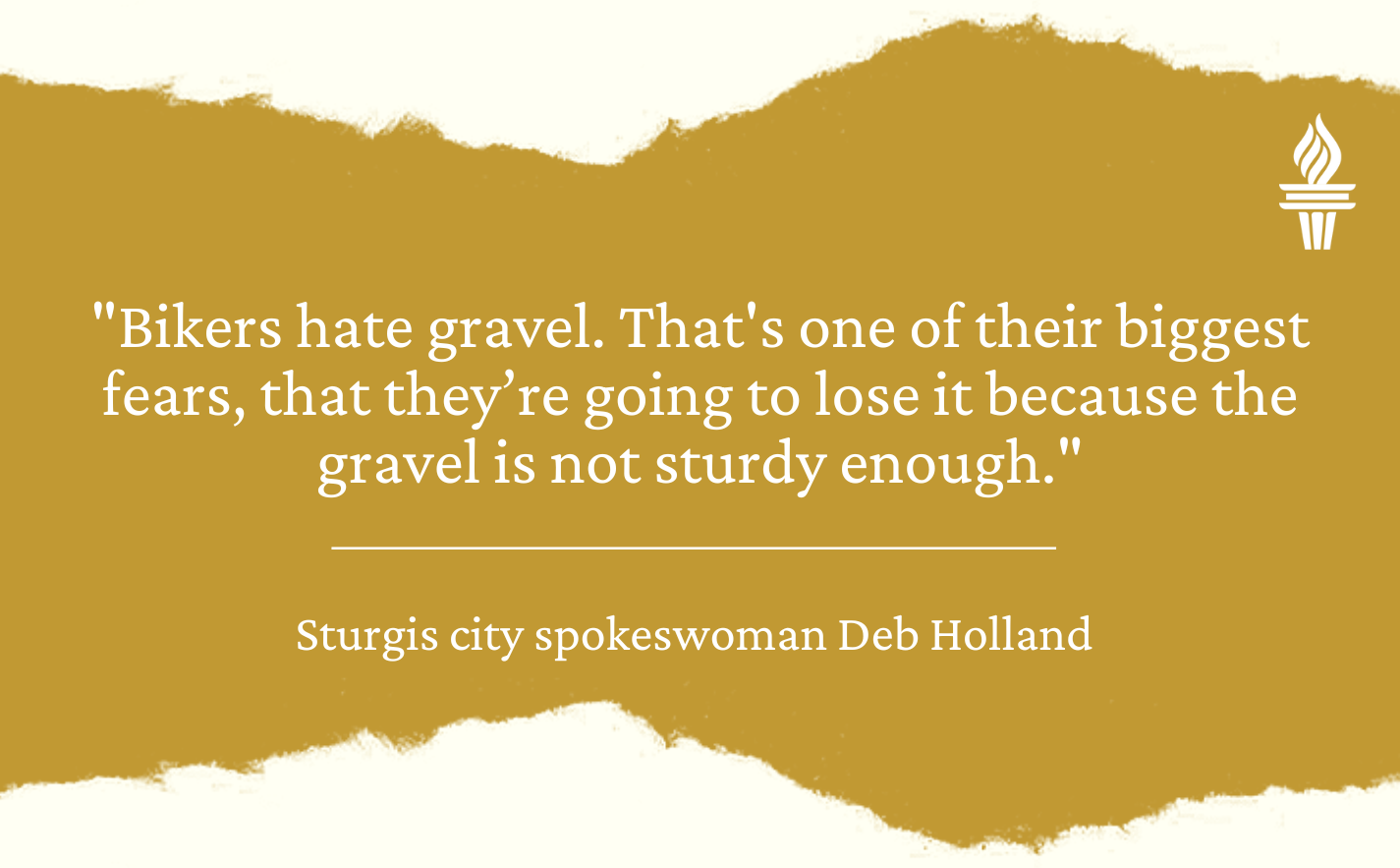
While urging riders to use caution during the U.S. 385 construction, expected to extend into 2027, Holland said she doesn't think the project will reduce rally attendance or dramatically change how bikers behave or where they ride during the event.
"In the big scheme of things, it’ll just be a blip or a thorn in our sides,” she said. “For two years, we can handle it, and in the long run I think everyone will appreciate what the state is doing to improve safety."
Riding on marbles or ball bearings
A 2016 article in "Rider Magazine" spoke to the uneasy feeling many bikers get when they travel on gravel.
"Why is it we get so uptight when things get loose underfoot (or under tire, as it were)?" the article stated. "Because things feel a little weird and unfamiliar on dirt. The motorcycle moves around more beneath us on unpaved surfaces, the front wheel seems to wander and the handlebars come alive in our sweaty palms."
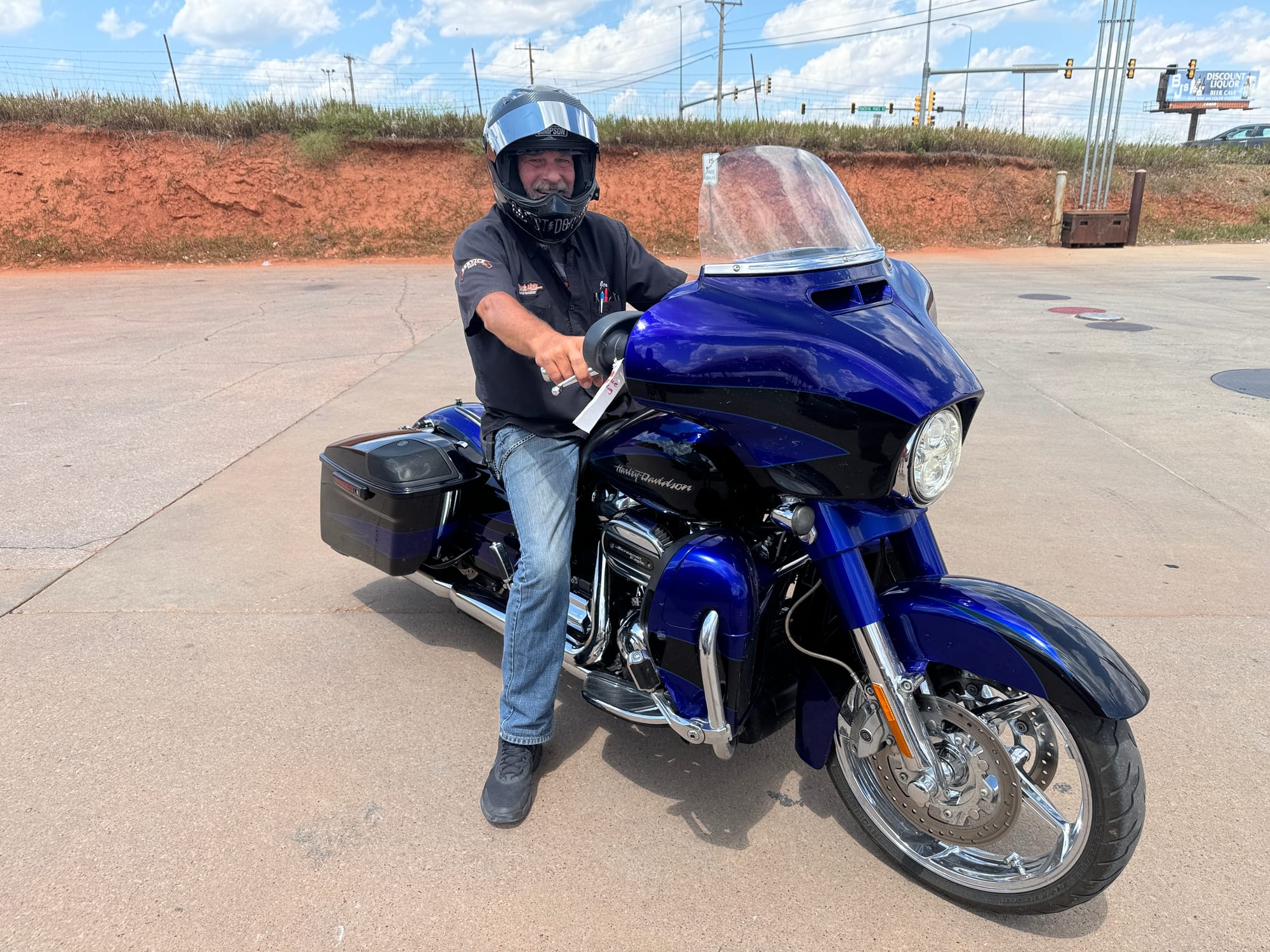
Jon Doyen, 49, has been riding motorcycles since he was a boy and continues to do so as a recreational rider and also as a cycle test rider for Black Hills Harley-Davidson in Rapid City.
Doyen said gravel surfaces reduce traction for a cycle and limit the control a driver has while moving. He said gravel can be managed by going slower and being more careful, but that without a doubt the uneven surface creates more hazards for bikers.
"If you're on soft gravel, it can really grab your front tire," Doyen said.

Gravel also creates challenges when turning because even a few stones that accumulate where the gravel meets pavement can add risk while turning or even while stopping, he said.
"One little rock can be like a ball bearing or a marble," Doyen said. "You put your foot down and your foot will slide right out from underneath you."
Doyen looked down and shook his head while recalling the time a biker friend tried to stop on a gravel surface and his foot splayed outward. That caused the bike to fall and his groin area to split open, resulting in a painful surgery and recovery.
"That's a tough spot to get injured," he said. "It was gross because he had to change the dressings four or five times a day."
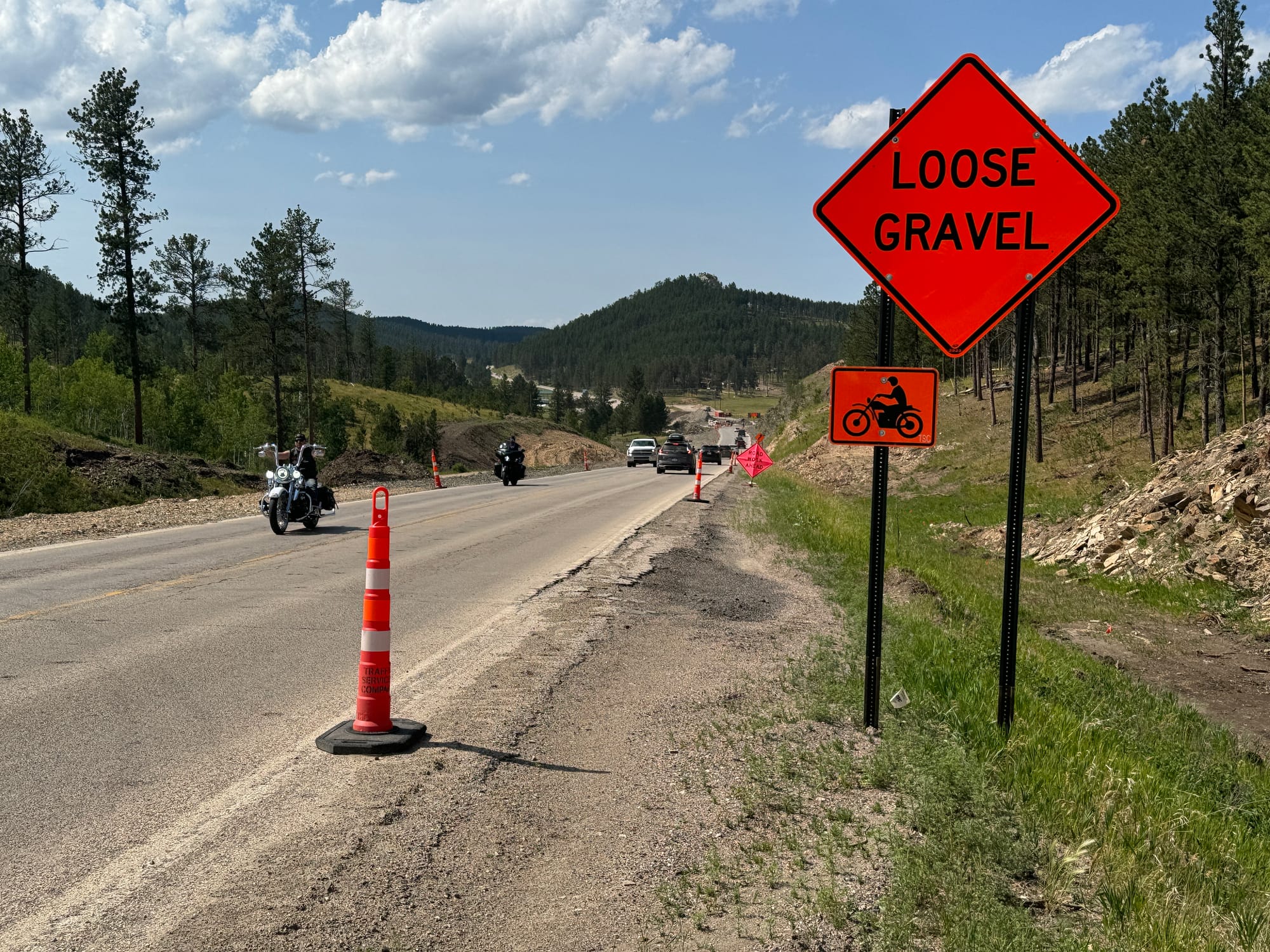
Rookie riders common during Sturgis Rally
Waterland said the current gravel surface on U.S. 385 is tricky to navigate for experienced riders but can be extremely hazardous for inexperienced bikers, especially at night or in the rain.
“If you’re an experienced rider, you can usually handle that, and I’ve ridden on muddy roads in the rain without a problem,” he said.
Waterland added that while many rally riders have logged many miles behind the handlebars, there’s always a good number of Sturgis visitors who are new to two-wheel travel.
“I think there’s more inexperienced riders than you would think during the rally,” he said. “Gravel is not a nice surface, and it’s pretty easy for them to go down.”
This story was produced by South Dakota News Watch, a nonpartisan, nonprofit news organization. Read more in-depth stories at sdnewswatch.org and sign up for an email every few days to get stories as soon as they're published. Contact Bart Pfankuch at bart.pfankuch@sdnewswatch.org.

